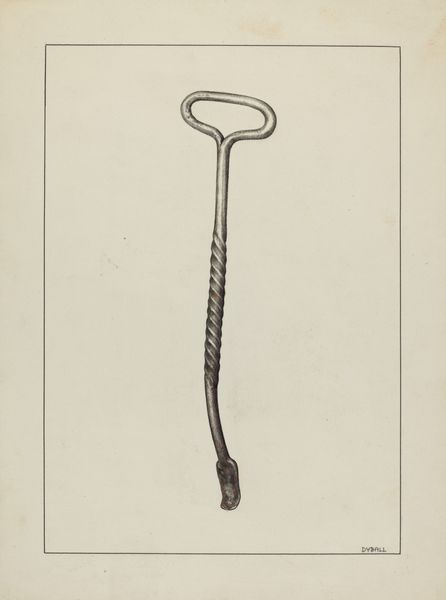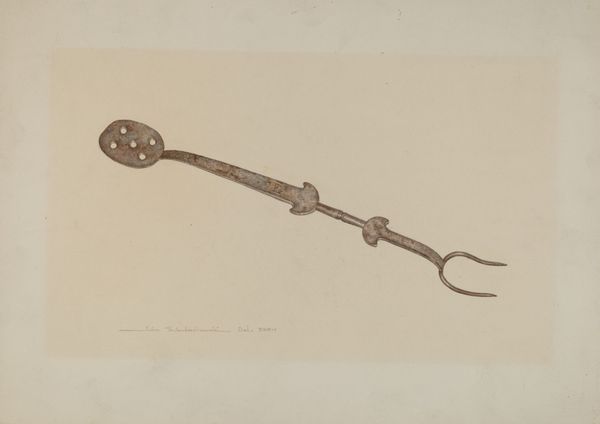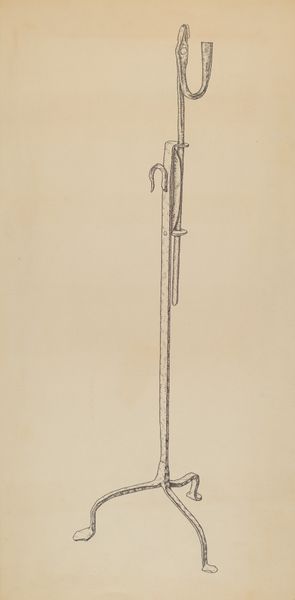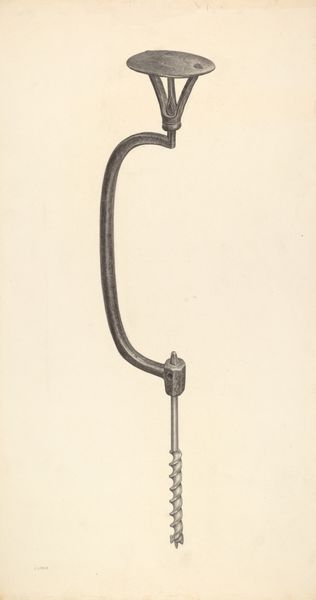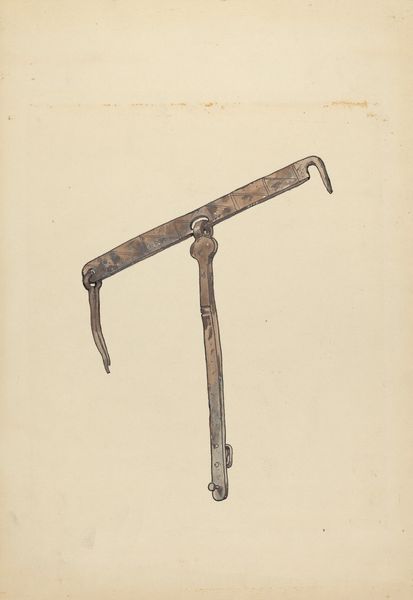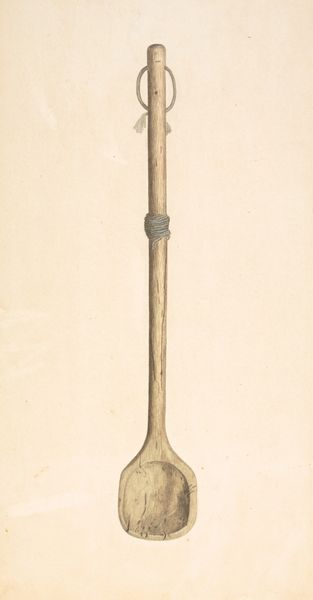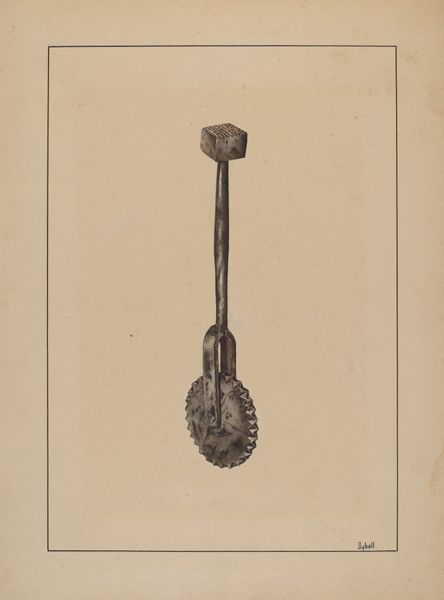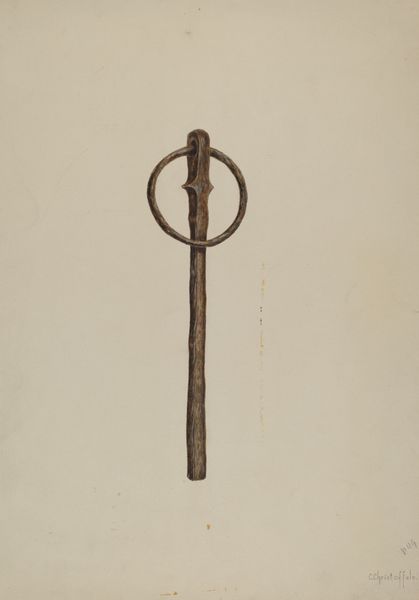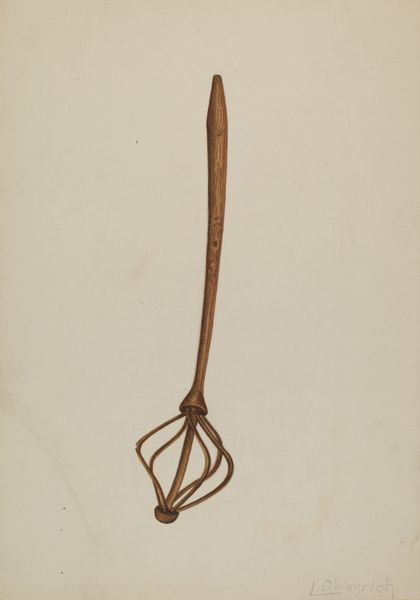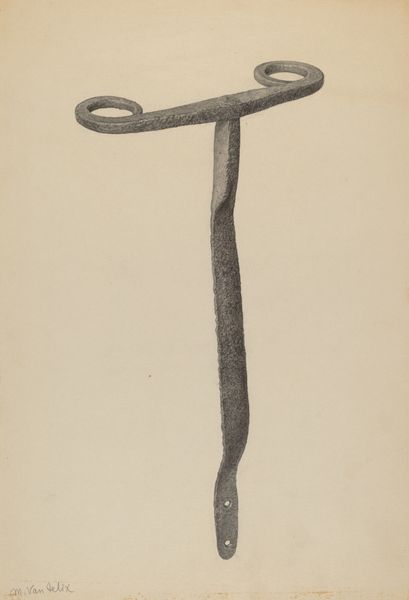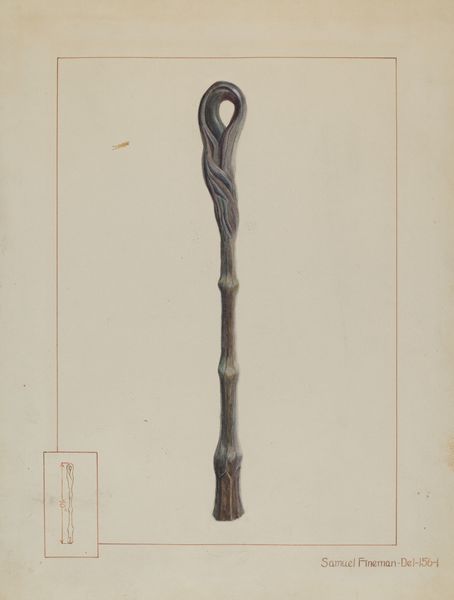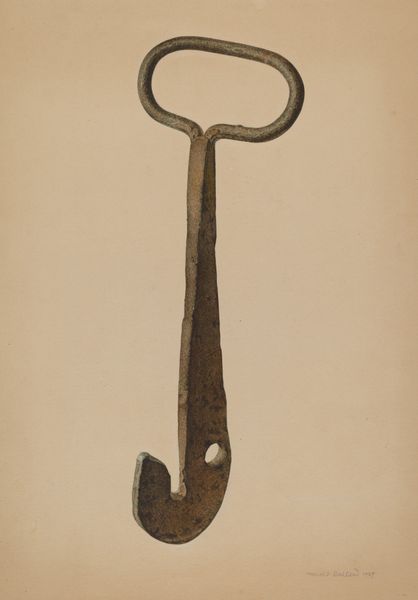
drawing, watercolor
#
drawing
#
watercolor
#
watercolor
#
realism
Dimensions: overall: 35.6 x 27.9 cm (14 x 11 in.) Original IAD Object: 26" long, 1" bit; 1/2" thickness of blade
Copyright: National Gallery of Art: CC0 1.0
Editor: Here we have Erwin Stenzel's 1938 watercolor and drawing, "Ship Builder's Auger." I'm struck by how much attention is paid to a seemingly mundane tool. It's not exactly exciting at first glance, but what do you see in it? Curator: It's precisely that mundane quality that interests me. This isn’t about glorifying art for art’s sake, but understanding the means of production. Consider the materiality: watercolor rendering steel. The contrast highlights labor and industry's presence even during times of artistic pursuit. What about the social context intrigues you? Editor: Well, I was thinking about the era. 1938 feels like a critical point in history. Was the artist trying to convey something about American industry at the time, maybe? Curator: Exactly! We see a nation rebuilding. And Stenzel is documenting not just the final product - ships - but also the very tools that facilitated it. This connects the finished form back to raw labor. It elevates a working class tool using an elite technique, such as watercolor, therefore democratizing art! Now, how might the depiction of the tool challenge boundaries between high art and craft? Editor: By depicting an everyday object in such a refined medium, Stenzel blurs the lines. Usually, fine art would depict "high" subject matter. Does that blurriness highlight social inequalities or make a statement about what's worthy of representation? Curator: Both! The means of representation – the watercolor – adds another layer. What message do you believe that juxtaposition between artform and object communicates? Editor: I now understand that it is more than just a tool; it’s about celebrating and recognizing the value in working-class contribution, especially when contextualized in the labor it provides. It provides a visual document of those contributions in industrial history. Curator: Indeed, and seeing how it elevates the dignity of labor changes my view completely. I now feel that studying the artwork brings me closer to American Industry than what I had anticipated.
Comments
No comments
Be the first to comment and join the conversation on the ultimate creative platform.
